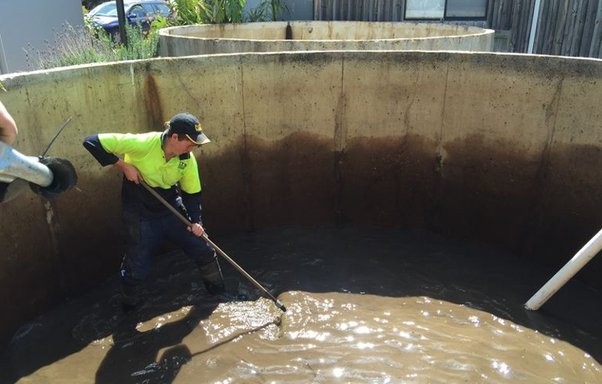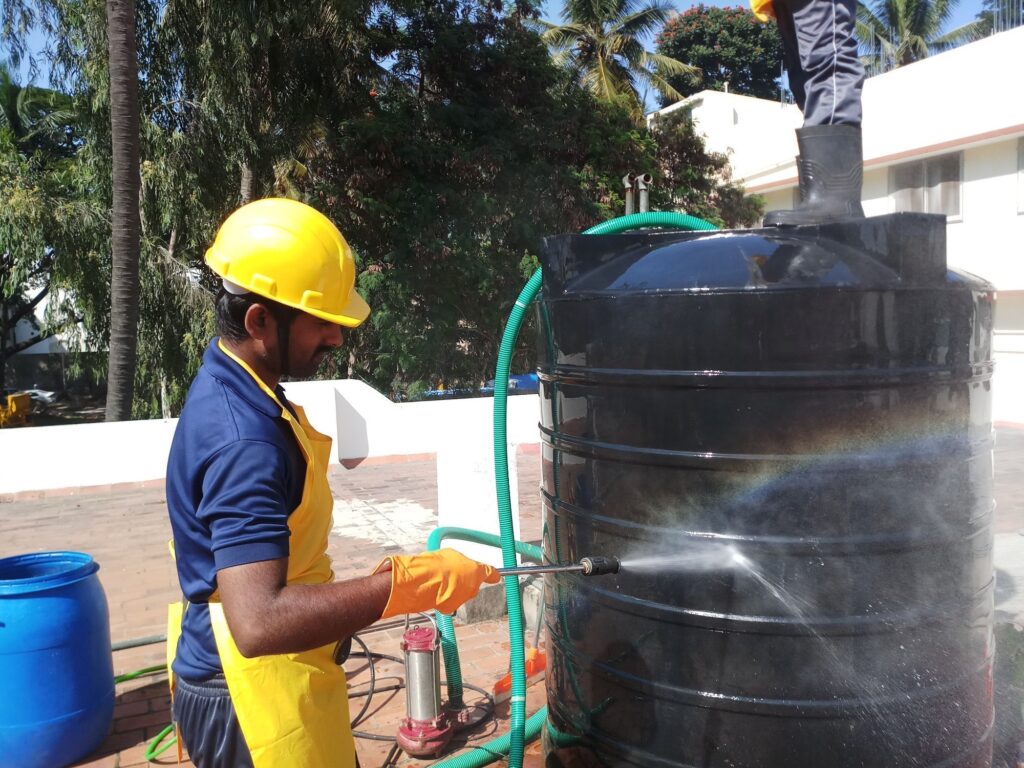
Regular maintenance of water storage tanks is crucial to ensure the quality and safety of stored water. Whether used for residential, commercial, or industrial purposes, maintaining water storage tanks helps prevent contamination, preserves water quality, and extends the lifespan of the storage system.
Inspection and Cleaning Schedule
Routine Inspections: Conduct regular visual inspections of the tank exterior and interior components. Look for signs of corrosion, leaks, or physical damage that may compromise structural integrity or allow contaminants to enter the tank.
Cleaning Frequency: Clean water storage tanks at least once or twice a year, depending on usage and environmental conditions. Tanks in areas prone to dust, debris, or biological growth may require more frequent cleaning.
Steps for Cleaning Water Storage Tanks
Prepare for Cleaning:
Ensure proper safety precautions are in place, including wearing protective gear such as gloves and masks.
Disconnect electrical power to pumps or systems connected to the tank to prevent accidents.
Drain the Tank:
Please start by completely emptying the tank of all water. Use the tank’s drain valve or pump out the water if necessary.
Scrubbing and Disinfecting:
Scrub the interior surfaces of the tank using a stiff brush and a mild detergent or chlorine solution. Focus on removing any sediment, algae, or residue that may have accumulated.
Rinse thoroughly with clean water to remove cleaning agents and loosened debris.
Disinfection Process:
Disinfect the tank using a chlorine solution. Follow recommended guidelines for chlorine concentration and contact time to effectively kill bacteria and pathogens.
Allow the disinfectant solution to sit in the tank for the specified contact period before rinsing again with clean water.
Inspect and Repair:
Inspect all components such as valves, fittings, and seals for wear, corrosion, or damage. Replace any defective parts to prevent leaks or contamination.
Check the tank structure for signs of rust or deterioration. Consider applying a protective coating if needed to extend the tank’s lifespan.
Refill and Test:
Refill the tank with clean water from a reliable source.Monitor water quality parameters such as odor, taste, and clarity to ensure it meets acceptable standards.
Test water samples for microbiological and chemical parameters if necessary, especially for systems supplying drinking water.

Preventive Maintenance Practices
Monitor Water Levels: Regularly check water levels in the tank to ensure adequate supply. Adjust float valves or sensors to maintain consistent levels and prevent overflows or pump damage.
Temperature Control: Insulate tanks in colder climates to prevent freezing and thermal shock, which can damage tank materials and affect water quality.
Pest Control: Install screens or covers on tank vents and openings to prevent insects, birds, or rodents from entering and contaminating the water.
Documentation and Record-Keeping: Maintain detailed records of maintenance activities, inspections, and water quality test results. Documenting these efforts helps track trends, identify potential issues early, and comply with regulatory requirements.
Conclusion
Regular maintenance of water storage tanks is essential for ensuring the longevity and reliability of water supply systems. By following a proactive maintenance schedule that includes inspections, cleaning, disinfection, and preventive measures, stakeholders can uphold water quality standards, prevent contamination risks, and optimize the performance of storage infrastructure. Effective maintenance practices not only safeguard public health but also contribute to sustainable water management practices in residential, commercial, and industrial settings. Investing time and resources in regular tank maintenance pays dividends in preserving water quality and protecting the integrity of water storage systems for years to come.


